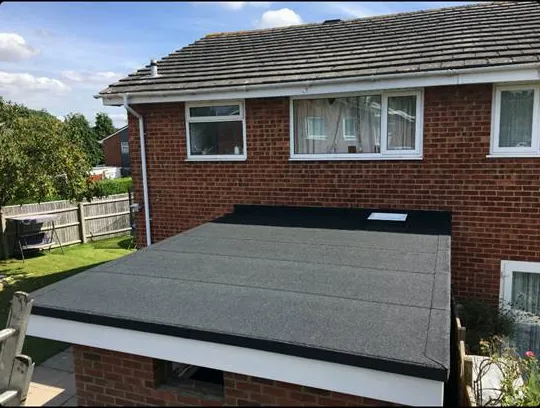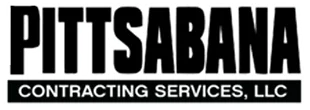The material you use to replace your flat roof is a crucial choice. Because it’s so crucial, you want to be certain that your decision is the best one. You must be aware of the ideal flat roof material in order to do this. Despite the wide range of choices, four flat roofing materials stand out.
Our mission is to inform homeowners like you about every facet of the roofing business. We’ll provide you with the information you need to choose the greatest flat roof purchase because of this.
EPDM roofing membrane
Ethylene propylene diene terpolymer, sometimes known as EPDM, is a synthetic rubber black membrane that is frequently utilized in industrial and healthcare settings. While utilized mostly in commercial applications, EPDM may also be used for residential roofs.
Because the black membrane won’t become as dirty as a white one, it is a fantastic option for a flat roof over a garage or other non-habitable space that can be viewed from a window. It is essentially like having a rubber roofing system that is bulletproof and incredibly robust. A completely adhered, 0.060-thick EPDM flat roof may be expected to last 25 to 30 years because to its endurance.
TPO roofing membrane
The single-ply white TPO (thermoplastic polyolefin) membrane is used for roofing on both commercial and residential buildings. The white membrane of TPO, in contrast to EPDM, radiates heat rather than absorbing it.
TPO is an excellent option since it will keep the room cooler if you have a flat roof or a low-sloped dormer over a bedroom. You can still select it in preference to an uninhabitable area like EPDM. A white membrane will smudge significantly more quickly than a black one. TPO is not as resilient as EPDM, but with proper installation, a flat roof using TPO membrane should last for 25 years.
BUR Modified Bitumen Roofing
Modified bitumen cap sheet roofing was developed in the 1960s as a replacement technology for BUR, or built-up roofing, by using the proven technology of BUR but also adding polymer reinforced roof wear layers or cap sheets.
These roofs can be installed using any number of techniques which are determined by the project’s specific requirements and material specified. These installation methods include:
- Hot applied
- Torch applied
- Cold applied
- Self-adhered
The polymer used in the cap sheet provides improved elasticity and flexibility in lower temperatures. The most commonly used polymers are atactic polypropylene (APP) and styrene butadiene styrene (SBS). SBS imparts a rubber-like characteristic to the bitumen.
Built-Up Roofing
The built-up roof, or BUR, is the ancestor of flat roofs. Built-up roofs have long since found a solution to the low pitch roof issue, which asphalt shingles were unable to handle. A hot mop is used to apply numerous layers of a specific kind of roofing felt that has been soaked with asphalt and embedded in bitumen to create built-up roofs.
The bitumen-soaked roof felt combines with the hot-applied asphalt or coal tar pitch to form a monolithic roof membrane. Repeating the roof felt/asphalt tar stacking in overlapping layers results in an assembly that is two to four plies thick.
Look to your trusted builder for advice, support and a quote to professionally and responsibly solve your problem. If you’re in the market for new roofing in Mount Lebanon PA, turn to Pittsabana Contracting Services LLC. This local roofing company employs team members who are certified by CertainTeed and committed to delivering premium service on every job, from repairing storm-damaged commercial buildings to fully replacing residential roofs. Call (412) 580-6567 to speak with a friendly staff member to schedule service or visit the website to learn more about how they’ll help you.



